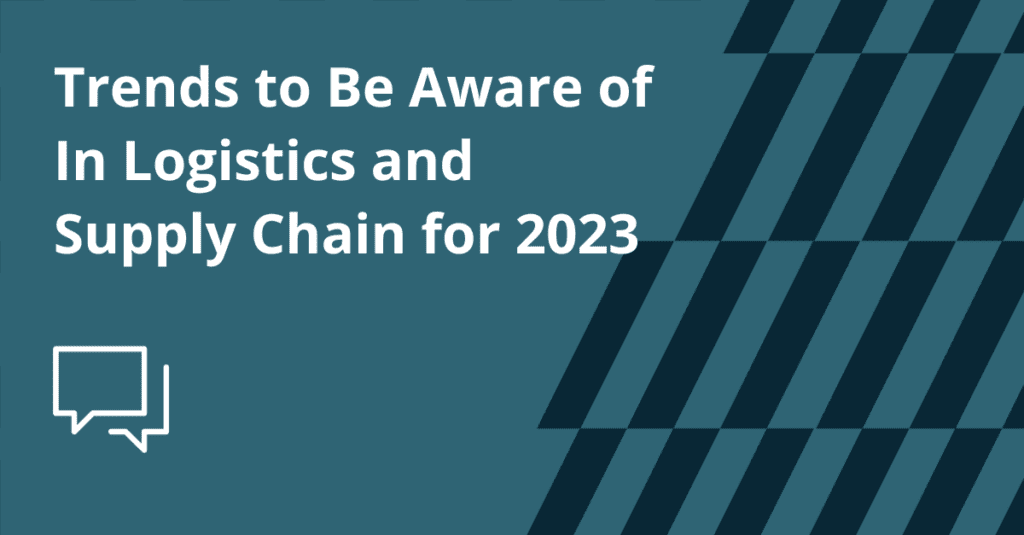
Every year, we sit down as a team and research what trends are emerging or advancing in our industry. This research is essential for ATC to ensure we remain at the top of our game and continue to provide our clients with the best experience.
When we wrote a similar blog on our findings, 5 Trends to Be Aware of in Logistics and Supply Chain for 2021,we spoke about the Internet of Things, Blockchain, AI, Warehousing, and Sustainability, and we will touch on them again, among others, in this blog.
So let’s dive in.
AI and Machine Learning
There is a growing recognition of the potential of AI and Machine Learning in modern supply chain management to drive significant improvements in efficiency, cost-effectiveness and customer satisfaction.
A figure that stood out straight away to us is $20 billion. This figure is the expected amount that AI in supply chains will be valued at by 2028 compared to $5 billion in 2021, quite considerable growth! (Blueweave Consulting).
In ATC, AI has played a growing role in our planning department over recent years, alerting us to adverse weather events that we need to avoid in a particular region. It also assists us with regular traffic alerts, detailing where there is congestion on a route and providing alternative directions to bypass so that our delivery deadlines remain unaffected.
Other areas where AI is now supporting logistics and supply chain are through automating decision-making and supporting customer service with chatbots. “Software bots can, for example, answer customer inquiries about delivery status or manage product returns.” DHL Freight Connections.
AI-powered Predictive Analytics
A significant development is the integration of AI-powered predictive analytics, which allows organisations to forecast demand and optimise inventory levels, thus reducing human error and improving efficiencies while bringing a good return on investment.
Internet of Things (IoT)
Another figure that jumped out at us is 55.7 billion. According to New Era Tech this is the number of connected devices that will be on the market by 2025.
IoT devices and sensors are being used to track and monitor assets in real-time, providing organisations with increased visibility and control over their supply chain operations. In addition, IoT-powered maintenance is on the rise, enabling companies to identify and fix potential issues, which again improves efficiencies and reduces downtime.
A vital function of the IoT that we value is the level of transparency we can now offer to our customers. Using connected devices, we can keep in touch with them while on the road so that they can follow the location of our trucks, have peace of mind that their assets are secure and can talk to the driver if necessary.
Blockchain
Blockchain technology continues to grow in popularity, offering a secure and transparent means of tracking goods and information throughout the supply chain.
“All components of the supply chain can be integrated into a single platform” financeonline.com
Blockchain is said to provide unparalleled protection for information. IBM.com explain it in almost Lego-like terms here “each new block connects to all the blocks before it in a cryptographic chain in such a way that it’s nearly impossible to tamper with.” This means that the person on the receiving end of the transaction, such as an invoice request, can rest assured that it is coming from their genuine supplier.
Green Logistics
With growing concerns over climate change and sustainability, companies are looking for ways to reduce their environmental footprint. These activities include reducing transport emissions, using renewable energy in warehouses and implementing recycling and waste reduction programmes.
We have written several blogs around our sustainable efforts, from the environmental considerations we have taken in our new HQ, including the exciting introduction of Beehives on-site, to the recent purchase of our electric vans in Dublin and Frankfurt.
Circular Economy
The production of waste in supply chains is now considered unacceptable as it adversely impacts the global environment. Businesses are being encouraged to find ways to reduce waste production and recycle end-of-life products or packaging.
ATC is already involved in this activity with our reverse logistics service, which focuses on taking back the packaging used for a data centre deployment and recycling it through our globally certified packaging partner or returning it to our client base.
While we have made much progress in reducing ATC’s carbon footprint, we have more to do, which is why we are delighted to have our new Sustainability Manager on board – (more to come in another blog :-)).
Cybersecurity
Unfortunately, there has been a notable rise in the number of cyber-attacks on supply chain software—an increase of 300%.
Many logistic and supply chain operators, including ourselves, are concerned about this growing trend and taking action by investing in measures such as encryption, Blockchain, two-factor authentication, regular updates and staff training to ensure the business’s security posture is robust.
Chief Technology Officer Nils Gerhardt provided an excellent summary on the trajectory for cyber security and the supply chain in 2023 “Overall, 2023 looks set to be a year in which companies will be concentrating on the essentials of their security setup – their supply chain, the safety of their data in the cloud and their ability to switch to new forms of encryption. When building up the foundations of a company’s cybersecurity, the hardware or cloud-based solutions will continue to be essential.”
I hope this article gave you food for thought as it did for me about the future of logistics and supply chain and the exciting advancements unfolding as I write this.
Keith
Managing Director


